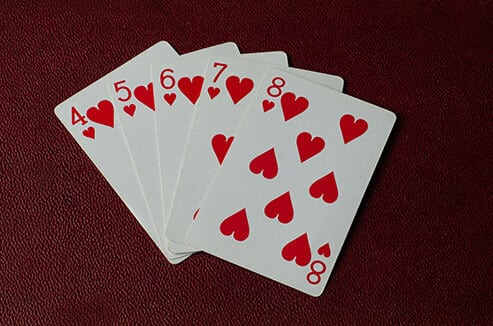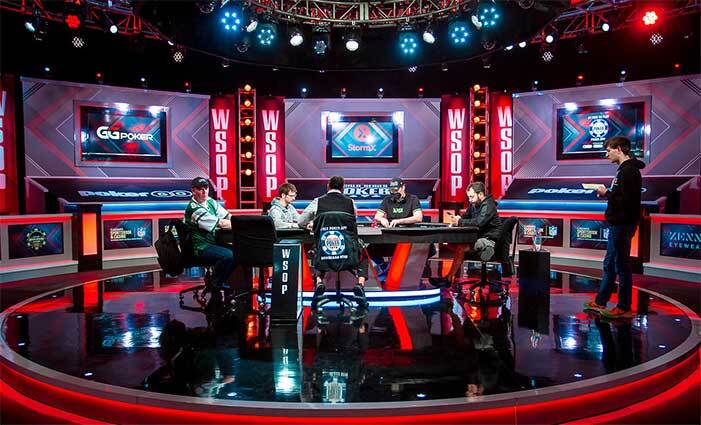If you’ve been playing only Texas Hold’em for a while, you might want to switch things up. Hold’em’s reputation as the number one way to play is deserved, but you don’t need to limit yourself to one form of poker. There are many other options out there that may be more appealing.
Today, we’ll discuss one of the most popular twists on poker’s hand rankings: Lowball poker. We’ll explain the three primary lowball formats, along with a few well-known poker variants that use them.
What is lowball poker?
Lowball poker describes a variation of the game with inverted hand rankings. The “worst” hand in regular poker is now the best in lowball, and vice versa. Lowball is divided into three main categories, each with different approaches to the inverted hand rankings.
Ace-to-five low
The most common one, ace-to-five low, is also known as California Lowball. It completely disregards straights and flushes, rating hands based on the card values. However, it does consider pairs and three-of-a-kinds, with a paired hand being worse than every unpaired one and a three-of-a-kind being worse than every paired hand.
Aces are always considered low cards, even lower than twos. Thus, the best hand would be 5-4-3-2-A, also known as “The Wheel”. In a tie, the next lowest card is used as the kicker. For example, 7-6-5-4-3 would lose to 7-5-4-3-2.
Ace-to-five low is the most common ranking system for Hi/Lo poker games, which split the pot between the player with the highest hand and the lowest one. There is a one variation of this for of lowball poker where the low hand only counts if it is an eight-low or better hand. In a case where the eight-low restriction is not met, there will be no low and and the high hand will win the entire pot.
Besides being used in Hi/Lo games, ace-to-five low is also used in “low only” poker variants like Razz. There’s no split pot here; the winner with the lowest hand wins it all.

Deuce-to-seven low
Deuce-to-seven lowball, also known as Kansas Lowball or 2-7 Lowball, is essentially the exact opposite of traditional poker hand rankings. Straights and flushes count against your hand strength, and aces are always counted as high cards.
Following those rules, the best hand in Deuce-to-seven, which is in some places still referred to as “the wheel,” is a seven-high, 7-5-4-3-2. This is because in Deuce-to-Seven, aces are always considered high, and a 6-5-4-3-2 hand is a straight.
Ties in this follow standard rules with the players comparing kickers with the second-lowest card, then the third-lowest card, and so on. So, 7-5-4-3-2 would beat 7-6-5-4-2, and 9-8-5-4-3 would beat 9-8-6-3-2.
Deuce-to-seven low is almost exclusively used in “low only” games, frequently seen in variants like 2-7 Single Draw, 2-7 Triple Draw, and Razz.
Ace-to-six low
The third and rarely used form of lowball is ace-to-six low, also known as London Lowball. It’s a mix between Deuce-to-seven low, in that it counts straights and flushes, and Ace-to-five low in that Aces are now considered low. These changes to the game mean the best hand in ace-to-six low is 6-4-3-2-A, which is known as a ‘Chicago Wheel’.
Ace-to-six low is typically only used in some areas of America and the United Kingdom. It’s the signature lowball format of London Lowball, which is a Low Stud Poker played with the Ace-to-six rules

Popular variants: Razz
Razz is the most popular form of lowball poker in the world. It’s an ace-to-five lowball version of Seven Card Stud. Players are dealt seven cards throughout the hand, trying to make the best five-card hand according to ace-to-five rankings.
Razz uses a fixed betting limit, which means players can’t size their bets. They have access to only two sizes: The small bet and the big bet. The small bet is used in the first two betting rounds, while the big bet is used in all later rounds. There is one exception; if any player has an exposed pair on the second betting round, anyone can immediately raise to the big bet size.
Razz also uses antes instead of the more common blinds. Antes are forced bets everyone must pay, and they’re usually a fraction of the small bet size. For a $1/$2 Razz game, the antes would typically be as low as $0.25 and up to $0.50.
The names of the betting rounds in Razz may be a bit confusing. The first betting round is actually known as the “third” street because each player receives three cards. Two of these are face-down “hole” cards, while the third is a face-up “door” card.
The player with the highest door card begins the action by paying the Bring-In, equal to approximately half of the small bet. They can also choose to pay the full price of the small bet; however, they many not check or fold. In case of a tie, the player with the highest suit pays the Bring-In. In order from lowest to highest, the suits are clubs-diamonds-hearts-spades.
After the Bring-In is paid, action begins to the left of the player that paid and proceeds clockwise around the table. There are four more betting rounds: The fourth, fifth, sixth, and seventh streets.
The fourth, fifth, and sixth streets each give one more door card to every player. The seventh street gives one last hole card, for a total of three face-down and four face-up cards. In every street beyond the third, the player with the lowest exposed hand begins the action.

Popular variants: 2-7 Triple Draw
2-7 Triple Draw is another one of the world’s most popular lowball variants. This version of Lowball uses the Deuce-to-seven rules format instead of ace-to-five. It’s a “draw” poker game, where players are dealt cards and given the opportunity to discard them and draw new ones.
2-7 Triple Draw also uses a fixed-limit betting format. The small bet is used for the first two betting rounds, while the big bet is used for the last two.
Triple Draw is played with blinds, similar to Hold’em. The blinds are half the corresponding bet sizes; in a $1/$2 2-7 Triple Draw game, the blinds would be $0.5/$1. Triple Draw also occasionally uses antes in addition to the blinds.
Betting action in Triple Draw is similar to Hold’em, with the player left of the big blind beginning the action. After each betting round is a “draw” round, where players can exchange any number of their cards for an equivalent amount of new ones. They can even keep their hand entirely the same.
After the fourth betting round, there isn’t a fourth drawing round. Instead, the showdown happens, and the remaining players must reveal their hands to see who wins the pot.

